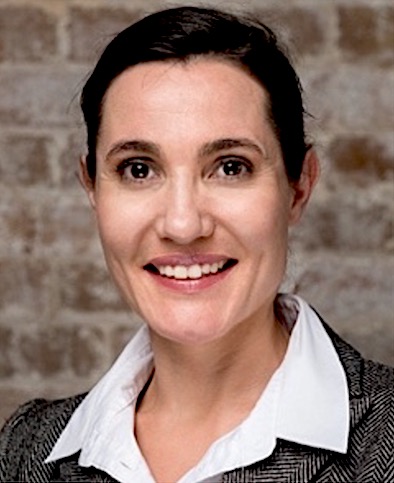“We were all there. I mean, who wasn’t? It seemed like no one had been left off the invite for this meeting. Everyone shared their two cents. The resource shortage was obvious. We need to act. Everyone agreed. At least, I thought everyone agreed. Until this morning. An unexpected email from the Division Director. He’s reconsidering the approach.”
Scenarios like this crop up far more frequently than we might like to think. A meeting took place. The key stakeholders were around the table. Recommendations were made. Discussions ensued. Heads nodded. Then people start running in the direction they think was agreed upon, only to discover later, and often via email, that agreement was merely a momentary apparition.
Such situations illustrate the fundamental need for human beings to work together to get things done. When people are working in sync, phenomenal things happen. When everyone is not on board, however, teams can find themselves cycling back to start over or re-working things which can seem inefficient, ineffective, and costly. This may also leave people feeling frustrated, disempowered, even demoralised. We rarely, if ever, work in a vacuum, completely alone, entirely unfettered, and able to go about doing what we do in exactly the way they want to do it. To be effective in any role requires us to master the ability to work with and through others.
This article is the first in a series of three focused on leveraging techniques that enable us to engage and better work with others to drive results.
To learn more about managing yourself as you navigate projects, stakeholders, and your career, please refer to the chapter “Professional Impact in the Construction Industry” by the author as part of a Springer book Industry 4.0 for the Built Environment, edited by Marzia Bolpagni, Rui Gavina, and Diogo Rodrigo Ribeiro.
Teamwork – a necessary condition for performance
When people come to work, they come together to drive or facilitate some form of action and outcome. After all, we are in business to design, engineer, produce, create, build, and deliver something that is of value to someone in the context of a commercial exchange. Interestingly, sustainable high performance is also linked more with the collective dynamics of a team than with any one person’s individual capability.

Google did some internal research on this question. Expecting to find certain individual traits emerging as core differentiators of performance, the team at Google were surprised to discover that “Who is on a team matters less than how the team members interact, structure their work, and view their contributions.”
Barbara Fredrickson found that higher-performing teams foster a safe, meaningful, and positive climate within which to work. This helps to create the conditions for people to feel comfortable to speak up, ask questions and openly share their thoughts. In this space, people are also more receptive to new or different ideas. When people feel comfortable to engage fully in open dialogue, there are more and more diverse suggestions and possibilities on the table from which to innovate and generate solutions, and ultimately drive outcomes.
Making decisions and influencing outcomes
Speaking of driving outcomes … well, this is the result of a complex series of factors, of which the collective dynamic is critical. In particular, outcomes are the direct result of decisions. In any workplace, throughout any given day, we are constantly making decisions.
Do I like working with you? Do I agree with what you have said? Do I think the approach you have recommended is the best way to do this? Do I actually want to do the task you have asked me to do?
One of the first things we can do is recognise that we are engaged in a whole plethora of decisions throughout the day. Then when we can be clear on the specific decision that needs to be made and action that needs to be taken, we can bring our agency more deliberately into play to drive towards the outcomes we want to achieve.
All too often, however, there are serious clashes between teams or divisions who find themselves locked in mortal combat over key decisions on what actually needs to be done and how. Consider these statements, for example:
- We need more resources.
- I am looking for approval and budget to hire two contractors to manage safety and procurement on Project Hospital offering a rate of between $800 – $1200 per day for an initial period of 12 months.
One statement is vague and loose, the other much more specific. The first statement could open things up to all manner of discussion, interpretation, even disagreement, while statement two sets clearer parameters at the outset. It is surprising just how many conversations are peppered with vague and loose requests like the first one here. And this is problematic. If we are not crystal clear on what needs to happen or what we are asking for, it is near impossible for the other person to have clarity.
Accordingly, and understandably, people can at times find themselves talking at odds or locked in an endless loop that seems to go around in circles with no clear conclusion. When this happens, it creates an opportunity to take a step back, ask questions and systematically work through the different perspectives, assumptions, ideas, and criteria around the table.
For example, we could ask:
- What do you see as the critical considerations in this decision?
- Can you talk me through your rationale in apportioning greater importance to this over that?
- When we look at this from the perspective of the client, what factors emerge as most important?
- When we look at this from the perspective of the regulator, what factors are more essential?
- When we look at this from the perspective of our people, what considerations do we need to take into account?
- What is the core set of criteria which will guide us through the decision?
- What parameters or assumptions do we need to put in place to maintain focus or manage scope?
- What risks do we need to be mindful of?
- What strategies will best mitigate those risks?
- What, if anything, have we missed or ignored in the process? Is there another way we could be looking at this?
Engaging others through open questions goes a long way to help better navigate decisions. When people bring a level of curiosity and willingness to ask open questions, then really listen to the answers, everyone is armed with more and richer information, as well as a greater diversity of views which ultimately facilitates a better determination, more innovative solutions, and higher value outcomes.
Bear in mind – decisions are emotive
Irrespective of the approach that is taken to making a decision, and for all people might think they are being rational, objective and impartial in the process, research has shown time and again that this is not entirely the case. Decision-making and influencing are more emotional and automatic than one may at first believe, and there are a number of more subconscious cognitive dynamics in train that impact decisions and either help or hinder a person’s level of agency in the process.


A leading authority in this space, Daniel Kahneman, posits that people have two cognitive systems running in parallel. System 1 is largely operating outside conscious awareness, instantaneous, efficient, effortless, and emotional, while system 2 is more conscious, deliberate, logical, and effortful. Interestingly, it is system 1 that governs a large part of everyday decision-making, and these decisions occur so fast, that they happen before we have even become aware of it. Someone new has walked into the meeting, and before even realising, the chair of the meeting has formed a negative impression and is not particularly disposed to listening to them. An industry report contains some scathing commentary about the function I work in, indignant at the coverage, I disregard it as a load of unsubstantiated rubbish and send it to the trash.
This is the space where emotions hold sway and cognitive biases come into play. Cognitive biases are deep-seated beliefs, views, or assumptions that we carry with us and which subtly influence our engagement with others and in ways that we are typically not aware of. They are heuristics, mental shortcuts, or rules of thumb that we build up through life and which help us to make sense of, and navigate, the world. In many instances, these mental shortcuts can be helpful, useful, and efficient and are, in fact, necessary to function and survive. They can, however, also be grossly off-mark and entirely erroneous, fostering narrow, unsubstantiated, or skewed thinking that may lead to poorer quality determinations and result in compromised outcomes. There exists a whole raft of cognitive biases that can impact people’s determinations and decisions and of which we should be mindful.
Example of Cognitive Biases:
| Cognitive Bias | Definition |
| Confirmation Bias | The predisposition to look for, and place weight on, information that confirms our ideas, beliefs, or position and ignore information that is contrary or opposing |
| Ostrich Effect | Compounding the Confirmation Bias, this is the tendency to avoid or ignore negative, unexpected, or unwelcome information |
| Affect Bias | The tendency to allow our affective or emotional state to overly shape or colour our choices or decisions |
| Horns or Halo Effect | The tendency to extrapolate from the specific to the general in our judgments and determinations, be that in a negative or positive direction. For example, a colleague is late to a meeting once or twice, and we extrapolate they are ‘always’ late and judge them to be unreliable overall (Horns Effect) |
| Commitment Bias or Sunk Costs Fallacy | The tendency to stick with a decision or determined course of action the more we have invested in the process, whether that be energy, time or resources |
Cognitive biases shape thinking in subtle but important ways and may at times compromise innovation and lateral thinking or keep people anchored to a reference or belief that is fundamentally limiting. To counteract this, it is helpful to foster the ability to pick up when we’re reacting, assuming, filling in the gaps, or falling prey to cognitive bias, and choose whether we need to pause, slow things down, and engage a more effortful process.
This is where the cognitive apparatus of system 2 comes in, involving more conscious, deliberate, higher-order thinking that is typically slower and more effortful. This empowers us to be more mindful in the way we respond and engage. The meeting chair can choose to put in the effort to listen more openly. In the process, they might realise that while the person’s “style” may have put them off, what they have to say is incredibly sound and extremely insightful. Catching biases in action or testing assumptions can be difficult, even uncomfortable, yet being cognizant of mental shortcuts and their pitfalls means we can work through various options with a greater level of open-mindedness, better collaborate and enhance the quality and efficacy of the final determination.
So … where and how might you slow things down, examine your inbuild assumptions and biases, and choose to engage differently?
If you’ve enjoyed the first installment of this blog on engaging others to drive results, why not check out part 2 of this article. There we unpack and examine the way we can better tune into the feelings in the room to ensure we stay on track to achieve the objectives we set at the outset.
Read Part 2 of the article series.
Further Resources and Reading
- Rozovsky, J.: The Five Keys to a Successful Google Team, 17 November (2015), https://rework.withgoogle.com/blog/five-keys-to-a-successful-google-team/, last accessed 31/01/21.
- Fredrickson, B. L.: The broaden-and-build theory of positive emotions. The Royal Society Online, 359, 1367-1377, London (2004).
- Fredrickson, B. L.: Positivity. Oneworld Publications, Oxford (2010).
- Kahneman, D.: Thinking, Fast and Slow. Farrar, Straus and Giroux (2011).
- The Decision Lab, Cognitive Biases – A list of the most relevant biases in behavioural economics, https://thedecisionlab.com/biases/, last accessed 31/01/21.
The title image: Photo by Dylan Gillis on Unsplash (https://unsplash.com/photos/KdeqA3aTnBY)
About the author


View the original article and our Inspiration here


Leave a Reply